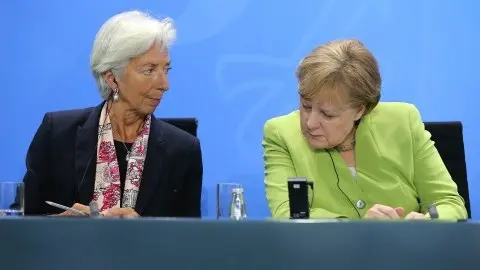Rates: Blinkers on en route to 2%
The market is sniffing a reduced recession risk. The comfort blanket of consecutive rate cuts by the Fed has helped. But the catalyst for change has come from politics. In consequence, core curves are re-steepening. With the US 10-year in this mood, we will likely see a test of 2% before we get back to testing for lower yields again
There has been a change in the air of late. It started a few weeks ago and has manifested in rallies in risk assets alongside an upward ratchet in core market rates.
In the background, the Federal Reserve had been busy shaving the funds rate at consecutive meetings. Meanwhile, the Trump administration has been teeing up a trade truce with China, no doubt identified as part and parcel of a route to a second term in office. And Prime Minister Boris Johnson has managed to push Brexit into the long grass for at least another few months. Even if only briefly, all of this is enough to allow markets to breathe a little. While things are far from perfect, this combination has been enough to re-calibrate the market discount towards a more positive tint.
Quietly, the US yield curve has moved from a state of inversion to an upward sloping one. Even the 2/5yr segment, which had fired the first of the inversion warning shots, has now moved back into positive territory. It is not upward sloping by much (just 5 basis points) but it is enough to dumb down recession alarm bells. And as we write the 2/10yr is honing in on a 25bp curve, again, well clear of inversion. When this spread hit -5bp in late August, the Fed had begrudgingly delivered a rate cut. It has since followed that up with two more. Fast forward, add reduced imminent risk of economic suicide on both sides of the Atlantic, and the need for more immediate rate cut action from the Fed has been downsized.
It seems to us that equities are reacting to what's in the rear mirror, and are prone to demanding a December rate cut as we get closer to it
There have been other positive developments too. The US 10-year breakeven inflation rate is heading back up towards 1.7%. This is still remarkably low (discounting inflation at closer to 1.5% than 2% for the next decade). But it is up from the 1.5% breakeven we had only a few weeks ago. The biggest driver here has been a vanilla rise in (nominal) market rates. The US 10-year is now up in the 1.8% area - a material rise from the 1.5% area hit about a month ago. With risk assets, and in particular equity markers, in good condition, there is a counter momentum out of risk-free rates like Treasuries. That could be enough to tempt the 10yr to have a go at getting back up to 2%. That is the immediate near-term call.
We'd have a preference to fade this move though. It is not that we doubt the validity of the market discount process and the evolving "positives" (or fewer negatives) surrounding global trade and Brexit. It is more a concern that the rise in market rates is also an inverse reaction to the rally in equities. Given the underlying stresses on corporate profits as evidenced from reduced investment ambitions (actual and future), it seems to us that equities are reacting to what's in the rear mirror, and are prone to demanding a December rate cut as we get closer to it, and in consequence could well see confidence crumble as the Fed increasingly makes clear that enough is enough for now.
Fed's technical rationale for holding off
It is in the interest of the Fed to provide money markets with as much stability as possible into the turn of the year. Why? To prevent a repeat of September which saw repo rates hit 10% as we approached the end of Q3. Back then the market needed to window dress in regulatory terms the lack of access to liquidity, and hence the rise in the price of it. Here, by avoiding any temptation on the part of money market players to wait for a possible December rate cut, such players can instead plan now for the year-end. This, in turn, should help avoid a repeat of the September spike.
It is in the interest of the Fed to provide the money markets with as much stability as possible into the turn of the year. Why? To prevent a repeat of September which saw repo rates hit 10%
The other technical rationale for the Fed to stay put now is they are currently buying bills and adding reserves to the system as a means to ensuring that there is adequate liquidity in play (again, a reaction to the September spike). While this is not classic quantitative easing per se, as it is so short in duration, it is still net monetary easing, which thickens the comfort blanket for the economy. The big question is whether this will all be enough as we head into 2020.
Our economists are not convinced and anticipate a resumed rate-cut risk in Q1 as the macro numbers disappoint. That backdrop would be enough to see 2% for 10yr US as a local peak (if we get there), and for 1.5% to be back on the radar screen as a theme beyond that.
So, it is still a low market rates environment, with inflation contained and questions to be answered on the state of the economy. The subtle changes in the market discount make full sense as some risks have been downsized; we are just keen to not to extrapolate too far.
Download
Download article
8 November 2019
November Economic Update: Trading the positives This bundle contains 9 ArticlesThis publication has been prepared by ING solely for information purposes irrespective of a particular user's means, financial situation or investment objectives. The information does not constitute investment recommendation, and nor is it investment, legal or tax advice or an offer or solicitation to purchase or sell any financial instrument. Read more
